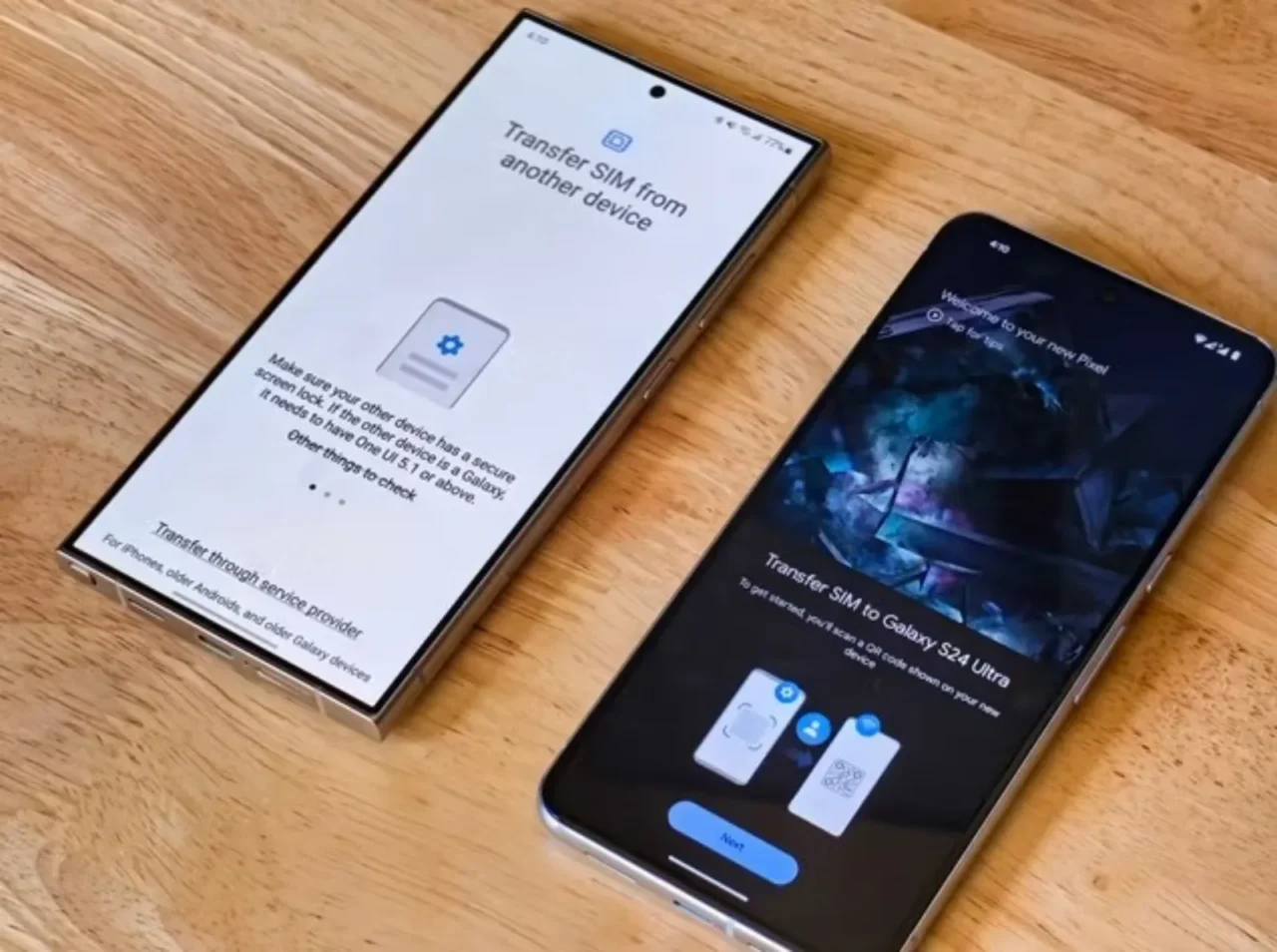In a significant technological leap, Android has introduced a feature enabling users to effortlessly transfer eSIMs between phones, marking a new era in smartphone flexibility and connectivity. This advancement, part of the Android 14 update, is initially available in the US with specific network providers. However, Indian users may need to exhibit patience as the feature’s compatibility with local network providers is still in progress.
- Key Highlights:
- The eSIM transfer feature is part of Android 14, enhancing smartphone flexibility.
- Initially available in the US, specifically with T-Mobile and Deutsche Telecom.
- Indian users await compatibility confirmation with local network providers.
- The feature signifies a move towards widespread eSIM technology adoption.

The Rise of eSIM Technology: A Global Perspective
eSIM technology represents a paradigm shift in mobile communications, offering a digital alternative to traditional physical SIM cards. This technology enables users to activate a mobile network plan without the need for a physical SIM card, streamlining device setup and usage. Android’s initiative in incorporating eSIM transfer capabilities signifies a substantial step forward in promoting eSIM technology, promising a more seamless and efficient experience for smartphone users worldwide.
- SEO Keywords:
- Android eSIM transfer, digital SIM technology, smartphone connectivity, mobile network flexibility, eSIM adoption
Understanding the Delay in India
While the new feature is a boon for many, Indian users might face a delay due to various factors, including regulatory frameworks and technical compatibility issues. India’s vast and diverse telecommunications landscape presents unique challenges in standardizing new technologies like eSIM. This delay underscores the need for coordinated efforts among technology providers, network operators, and regulatory bodies to ensure a smooth and efficient rollout of such advanced features in the Indian market.
- Headings:
- The Evolution of SIM Technology
- Android 14: Spearheading eSIM Transfers
- Challenges in the Indian Telecommunications Landscape
Android’s new eSIM transfer feature is set to revolutionize how users switch between phones. This feature, introduced in the Android 14 update, allows users to easily transfer their eSIM profiles from one Android device to another, significantly simplifying the process of changing phones. Initially, this functionality is available with specific network providers, like T-Mobile’s parent company Deutsche Telecom in the United States.
However, users in India might need to wait a bit longer for this feature. The compatibility of the eSIM transfer tool with Indian network providers has not been confirmed yet, and it may take some time before it becomes available in the region. This delay could be due to the varying technical standards and regulations related to telecommunications in different countries.
It’s important to note that this advancement is part of a broader move towards eSIM technology, which is gradually replacing traditional SIM cards. The ease of transferring eSIM profiles marks a significant step forward in making smartphone use more flexible and user-friendly, especially for those who frequently switch devices or travel internationally.
Conclusion
Android’s new eSIM transfer feature is a landmark development in smartphone technology, offering unprecedented ease in switching devices. As this technology continues to evolve, it holds immense potential for enhancing global connectivity and user experience. However, the wait for its introduction in India highlights the need for adaptive and collaborative approaches in technology deployment across diverse markets. Indian users, eager to embrace this advancement, anticipate a future where such innovations become seamlessly integrated into their daily mobile usage.

























Add Comment